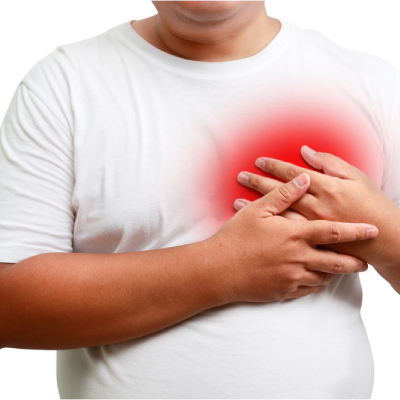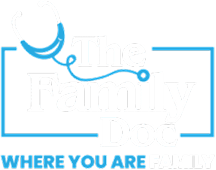
In today’s health-conscious world, more and more people are hearing the term hyperlipidemia, often during routine blood work or a doctor’s visit. But what exactly does it mean? Is it dangerous? And how can it be managed or prevented? If you’re new to the subject, this beginner’s guide will walk you through everything you need to know about hyperlipidemia, also commonly referred to as high cholesterol.
Understanding High Cholesterol
To begin, it is a medical term that refers to increased levels of lipids (fats) in the blood. These lipids primarily include cholesterol and triglycerides. While the body needs some amount of fat for energy and cellular function, too much can lead to serious health problems. High cholesterol often goes unnoticed for years because it typically presents no symptoms until a major event like a heart attack or stroke occurs.
Furthermore, when people talk about cholesterol problems, they’re often referring to an imbalance between “good” (HDL) and “bad” (LDL) cholesterol. High cholesterol involves high levels of LDL or triglycerides, low levels of HDL, or a combination of these.
Is Hypercholesterolemia the Same as Hyperlipidemia?
At first glance, these terms may appear interchangeable; however, they are not similar. So, is hypercholesterolemia the same as hyperlipidemia? Not quite. The term hypercholesterolemia refers to elevated cholesterol levels, particularly LDL cholesterol. High cholesterol is a broader term that includes high levels of any fats in the blood, including both cholesterol and triglycerides. In other words, hypercholesterolemia is a type of cholesterol, but not all hyperlipidemia is hypercholesterolemia.
Types of Hyperlipidemia
Now that we understand what it is, let’s look at the types of high cholesterol. They are typically classified as primary or secondary:
- Primary Hyperlipidemia – This is usually inherited. Genetic factors play a significant role in how the body processes fats. Familial hypercholesterolemia is one well-known example.
- Secondary Hyperlipidemia – This results from other health conditions such as diabetes, obesity, or hypothyroidism. It can also be caused by lifestyle factors like a high-fat diet, lack of exercise, or excessive alcohol use.
Additionally, high cholesterol can be classified based on lipid profiles:
- Type I – Elevated chylomicrons (rare).
- Type IIa – Elevated LDL cholesterol.
- Type IIb – Elevated LDL and VLDL (extremely low-density lipoprotein).
- Type III – Elevated IDL (intermediate-density lipoprotein).
- Type IV – Elevated VLDL.
- Type V – Elevated chylomicrons and VLDL
Causes and Risk Factors
Numerous factors can lead to the development of high cholesterol:
- Genetics: A family history of cholesterol issues increases your risk.
- Poor diet: Diets rich in saturated and trans fats boost cholesterol levels.
- Lack of exercise: Physical inactivity may reduce HDL (good cholesterol).
- Obesity: Being overweight is strongly linked with higher LDL and triglyceride levels.
- Medical conditions: Diabetes, kidney problems, and hypothyroidism are common causes.
- Medications: Some drugs, including beta-blockers and steroids, can impact lipid levels.
Can Hyperlipidemia Cause Stroke?
Many people are unaware of the serious risks associated with untreated high cholesterol. Can high cholesterol cause a stroke? The answer is yes. Elevated cholesterol can contribute to the accumulation of plaque in the arteries, a condition known as atherosclerosis. When plaque accumulates, it narrows or blocks blood vessels, increasing the risk of both heart attacks and strokes. This connection underscores the critical nature of managing lipid levels effectively to avoid long-term cardiovascular consequences.
Symptoms to Watch For
One of the most worrying elements of elevated cholesterol is its quiet nature. Most people won’t feel any different until a significant cardiovascular event occurs. Nevertheless, in some rare cases, individuals with severe cholesterol may develop physical signs such as:
- Xanthomas (fatty deposits under the skin)
- Xanthelasma (yellowish deposits around the eyes)
- Corneal arcus (a gray ring around the cornea)
Despite these possibilities, regular blood testing is the only reliable way to detect abnormal cholesterol levels.
Diagnosing High Cholesterol
Diagnosis typically involves a simple blood test called a lipid panel or lipid profile. This test measures:
- Total cholesterol
- LDL (bad cholesterol)
- HDL (good cholesterol)
- Triglycerides
Doctors frequently recommend fasting for 9 to 12 hours before the test to ensure accuracy.
Treatment Options
Once diagnosed, how can high cholesterol be managed? Fortunately, there are many effective options. The first line of defense is typically lifestyle modification. These changes may include:
- Choosing a heart-healthy diet high in fruits, vegetables, whole grains, and lean proteins.
- Reducing saturated fats and eliminating trans fats.
- Exercising at least 30 minutes every day, five days a week.
- Reducing weight while avoiding smoke and excessive alcohol.
However, when lifestyle modifications are insufficient, medication may be required. Statins are the most often used medications to decrease LDL cholesterol. Other alternatives include bile acid sequestrants, niacin, fibrates, and PCSK9 inhibitors.
If you’re looking for hyperlipidemia (high cholesterol) treatment in Michigan, many clinics and healthcare systems offer tailored plans involving both lifestyle coaching and prescription therapies. These programs aim to reduce your heart risk due to fats and support long-term cardiovascular health.
Is Hyperlipidemia a Disability?
A common question is: is high cholesterol a disability? In most cases, it is not considered a disability on its own. However, if it leads to severe complications like a heart attack, stroke, or other disabling conditions, then it could be a contributing factor in qualifying for disability benefits. The key issue is how much the condition affects daily life and employment capacity.
Prevention: A Lifelong Strategy
Even if you’ve never had cholesterol issues, it’s wise to take preventive steps. Routine screenings are the first step in prevention, especially if you are older, obese, or have a family history of high cholesterol. Educating yourself and making heart-healthy choices early can significantly lower your risk of developing high cholesterol later in life.
What Is the Difference Between Hypercholesterolemia and Hyperlipidemia?
As noted earlier, what is the difference between hypercholesterolemia and high cholesterol often confuses people. To recap: hypercholesterolemia focuses specifically on elevated cholesterol levels, while high cholesterol includes a broader spectrum of lipid abnormalities, including high triglycerides. Understanding this distinction is important for accurately interpreting lab results and tailoring treatment approaches.
Primary Care Services in Michigan
If you’re located in the Great Lakes State, you’re in luck. Access to Primary Care Services in Michigan is extensive, offering everything from wellness checks to chronic disease management. Your primary care provider can play a vital role in monitoring your lipid levels, identifying risk factors, and initiating early interventions. They often collaborate with cardiologists, dietitians, and endocrinologists to provide comprehensive care.
Visit a Specialist for High Cholesterol Treatment Today
Sometimes, managing high cholesterol requires expert help. If your cholesterol remains high despite lifestyle changes or if you have a complex medical history, it’s time to visit a specialist for Hyperlipidemia treatment today. Lipid specialists and cardiologists have the tools and expertise to create a detailed plan to get your lipid levels under control, preventing complications down the road.
Final Thoughts: Managing the Cholesterol Issue
In conclusion, hyperlipidemia may be silent, but its consequences are loud and dangerous. From cholesterol issue complications to heart risk due to fats, untreated lipid disorders can lead to life-altering events. That said, the good news is that with the right approach—regular screenings, a healthy lifestyle, and possibly medication, it’s entirely manageable.
Taking control of your lipid health isn’t just a matter of avoiding disease; it’s about enhancing your quality of life. Whether you’re just beginning your health journey or looking for specialized high cholesterol treatment in Michigan, the resources and support are out there. So, be proactive. Talk to your doctor, understand your numbers, and make the changes necessary to protect your heart. Because when it comes to your health, knowledge truly is power, and action is life-saving.


